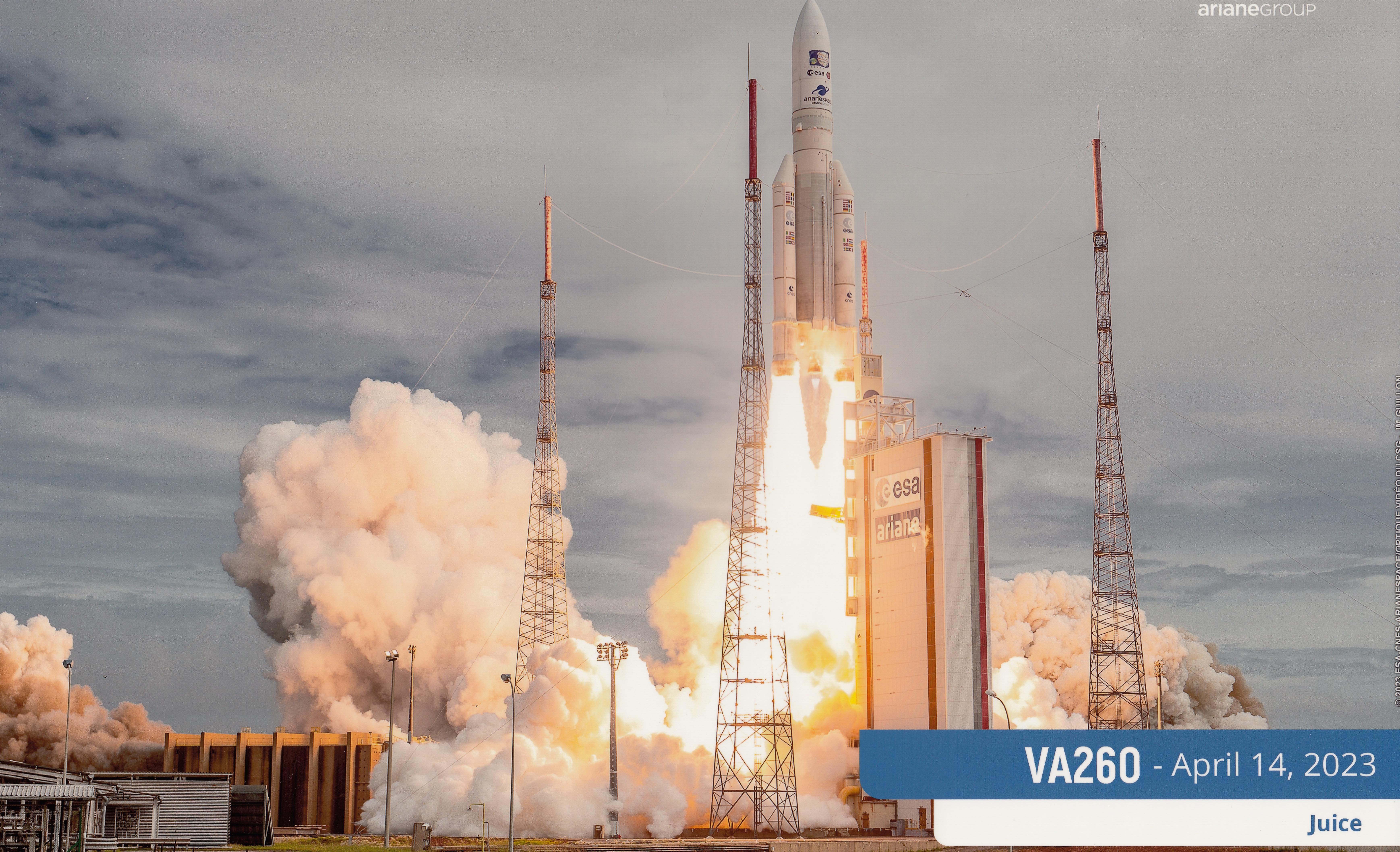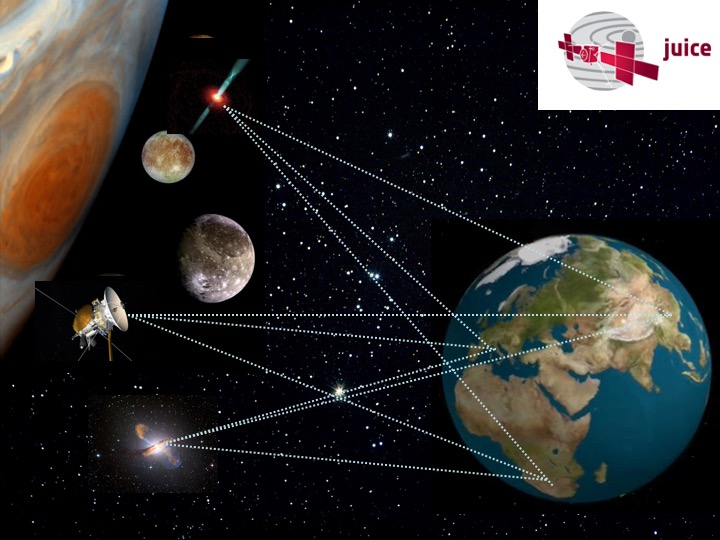
Planetary Radio Interferometry and Doppler Experiment: VLBI studies in the Solar System
Leonid Gurvits

One of the Solar System exploration highlights of the passed year was the launch of the ESA’s Jupiter Icy Moons Explorer (JUICE) mission. After an eight-year long cruise toward the Jovian system, the mission will study the Jupiter’s Galilean moons Calisto, Europa and Ganymede, focusing its attention on the latter while becoming the first artificial satellite of a moon of another planet. The major science task of JUICE is to help in understanding the origins and evolutionary path of planetary bodies and evaluate them as potential habitats. Special attention will be given to investigations of the undersurface ocean in Ganymede as a potential cradle of extraterrestrial life.
The mission carries 12 experiments. One of them, Planetary Radio Interferometry and Doppler Experiment (PRIDE) is a VLBI segment of the mission. The main aim of PRIDE is to assist in ultra-precise determination of the JUICE spacecraft state vector, i.e. its celestial coordinates, their first (velocity) and second (acceleration) time derivatives. In turn, these measurements will contribute into accurate estimates of the ephemerides of the Galilean moons. Together with data from other mission’s experiments, the PRIDE measurables will help to get insights into the interiors of the icy moons and, possibly, get an answer on the question of suitability of internal conditions inside the moons for unknown forms of life.

JIVE is the PI (Principal Investigator) organisation of PRIDE. The methodology of PRIDE is based on the near-field VLBI technique developed and demonstrated by JIVE nearly 20 years ago for VLBI tracking of the ESA’s Huygens Probe landing in the atmosphere of Titan, a satellite of Saturn. PRIDE is the first example of a planetary science mission experiment in which JIVE plays a PI role. PRIDE-JUICE has been developed and is being implemented in close collaboration between JIVE and Faculty of Aerospace Engineering of the Delft University of Technology (The Netherlands), Konkoly Observatory -- HUN-REN Research Centre for Astronomy and Earth Sciences (Hungary), IMCCE, Observatoire de Paris (France), Laboratoire d’ astrophysique de Bordeaux, Univ. Bordeaux (France), School of Natural Sciences, University of Tasmania (Australia). It is expected that in the years leading toward in situ operations of JUICE in the Jovian system (2031—2033), a number of new partner organisations, including EVN members will join the PRIDE endeavour.
A detailed description of PRIDE-JUICE has been published recently in the special issue of Space Science Reviews (Gurvits et al., 2023, Sp. Sci. Rev. 219:79, https://doi.org/10.1007/s11214-023-01026-1) and in arXiv version https://arxiv.org/abs/2311.04376.
Contact:
Leonid Gurvits
JIVE, Dwingeloo, the Netherlands
Email: lgurvits@jive.eu